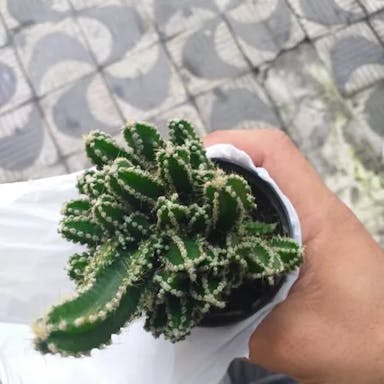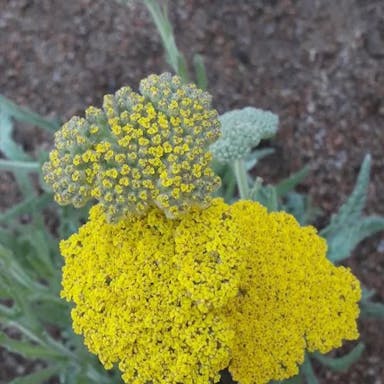Red echeveria, also known as Echeveria harmsii. This plant characterized bells-shaped, typically orange or red and appear stalks above. It low maintenance well-draining soil full sunlight. Compact plant, up 6 height spread 12 width used arrangements prized ornamental value. The Echeverria y Godoy making rosettes vibrant colors, enthusiasts.
Red echeveria
- Scientific name
- Echeveria harmsii
Basic Information
- Crassulaceae Family Echeveria Genus Red echeveria Species
- Crassulaceae > Echeveria > Echeveria harmsii
- 83%
- The Completeness of This Encyclopedia
Please help us complete the encyclopedia, Terrarium is a encyclopedia service to be completed with everyone in the world. Currently, this page is 83% complete. For more information on how to contribute, please click here.
- Perennial
- Subshrub
- Height
- 30cm ~ 40cm
- Flower Color
- Leaf Color
- Anthesis
- spring
- Sunlight Exposure
Full Sun Long hours of sunlight from morning to afternoon Partial Shade A location in the shade of a tree or where either the morning or afternoon is shaded Full Shade A place where there is no direct sunlight
- Full Sun
- Hardiness Zones
This is an indicator to know to which zone each plant can winter. Knowing the zone of each plant gives you an idea of the cold temperature resistance when grown in the ground without a roof. 2: -42.7 to -40.0 3: -39.9 to -34.4 4: -34.3 to -28.9 5: -28.8 to -23.3 6: -23.2 to -17.8 7: -17.7 to -12.2 8: -12.1 to -6.7 9: -6.6 to -1.1 10: -1.0 to 4.4 11: 4.5 to 10.0
- 9
- Cold resistance
- Fair
- Heat resistance
- Good
- Habitat of origin
- Mexico
- Growth Rate
- Normal
What is Red echeveria (Echeveria harmsii)?
What is Red echeveria (Echeveria harmsii)
Flower meaning
A flower's significance differs based on geography. The Red echeveria blossom possesses an intricate form and vivid red pigment. In America, gift-givers select it to express fondness, elegance, or gratitude. Love and affection represent intense devotion. Beauty and elegance describe its aesthetic properties. Gratitude and appreciation convey thankfulness. This plant suits deep emotions, like affection, due to its delicate nature and passionate color. Red echeverias thrive with proper sunlight, drainage, and occasional feeding. Overwatering encourages rot. Grow them in sandy soil mixes that drain rapidly. Provide bright, indirect light. Water thoroughly then allow drying between waterings. Use balanced fertilizers at half-strength during growth periods.
Calendar of Red echeveria (Echeveria harmsii)
Calendar
Red echeveria usually blossoms from late spring until early summer across the United States. The blossoms are most attractive in June. Blossoming takes place once annually, enduring approximately 2-4 weeks. To promote extended blossoming, make available ample sunlight, well-draining earth, and avoid overwatering. Pruning expired blossoms can also assist continuous blossoming. Preserving a steady watering timetable and avoiding drastic temperature changes can help lengthen the blossoming duration. Furthermore, feeding with a balanced fertilizer during the maturation season can sustain healthy blossom output. It is vital to observe the plant's health and adapt care habits accordingly to guarantee ideal blossoming functioning.
How to grow Red echeveria (Echeveria harmsii)
Watering
For the winter months, water the Red echeveria only once every 3 to 4 weeks. It is important that the soil dries out completely before watering again. Use a well-draining soil mixture to prevent harm from soggy conditions. During spring and summer, water a little more frequently, about once every 10 to 14 days. Base the watering schedule on temperature, humidity and soil dryness. Proper watering helps keep the Red echeveria in good health.
Soil and Fertilizer
Red echeveria thrives in well-draining soil. It requires a mix of sandy and loamy soil. Fertilize the plant with a balanced liquid fertilizer diluted to half strength every 2-4 weeks during the growing season. Avoid over-fertilizing as it can lead to nutrient imbalances. Regularly check the soil quality. Amend the soil with organic matter like compost to improve its structure. Provide bright sunlight. Water when the top inch of soil feels dry. Take care not to overwater. Mist leaves occasionally to increase humidity. Watch for common pests like mealybugs. Repot when rootbound.
Sunlight and Place
Red echeveria succeeds in sun with partial shadow. It loves heat. Be careful in cold below 20°F and move inside or use a lamp. Put it where it sees the sunrise and afternoon shade in summer. Stop sunburn. See the power of the sun and give indirect light at the hottest time of day. This avoids stress.
Advanced Information of Red echeveria (Echeveria harmsii)
Pruning
Red echeveria gains from removing old leaves and stems. Best time to trim is spring or early in summer when actively growing. Use clean scissors to cut off dead leaves, cutting near the base. Also, can shorten stems. After trimming, wait days before watering to stop decay. Regular trimming helps keep the Red echeveria vigorous.
Planting and Harvest
Echeveria requests well-draining planting mix. Repotting supplies fresh soil. Staking gives support if becoming top-heavy. Inspecting regularly for pests and promptly treating helps. Allowing soil to dry between watering is good. Overwatering causes problems. Cover roots when planting but not too deep. Every few years, refresh the soil by repotting. Mealybugs or aphids sometimes happen. If so, quickly do treatment. Check leaves and roots to see if too much water. Adjust water amounts based on that. For optimal growth, use a pot with drainage holes.
Propagation
Red echeveria can spread through leaf cuttings or offsets. To propagate through leaf cuttings, gently twist a well leaf from the plant. Allow it to callous for some days. Then place it on draining soil. Keep the soil lightly moist until roots develop. Offsets or baby plants that grow around the mother plant's base can be carefully removed and replanted in their own pots. This method allows for multiple new plants to be grown from one parent plant. Harvest offsets when they are a good size to ensure propagation success.
Pests and Diseases
Red echeveria is susceptible to common pests such as aphids, mealybugs, and spider mites. These insects can cause damage by sucking sap from the plant, leading to wilting, yellowing, and stunted growth. Preventive measures include regularly inspecting the plant for signs of infestation, using insecticidal soap, and maintaining proper air circulation to discourage pest buildup. In terms of diseases, Red echeveria is prone to fungal infections like powdery mildew and root decay. Powdery mildew appears as a white powdery substance on the leaves, while root decay causes the roots to decay due to overwatering. To prevent fungal diseases, avoid overhead watering, ensure proper drainage, and remove any infected plant parts promptly. Proper care and monitoring are essential to keep Red echeveria healthy and growing well.
Habitat of Red echeveria (Echeveria harmsii)
Habitat
Toxicity of Red echeveria (Echeveria harmsii)
Health Benefits
- edible
- Inedible
- Toxic
- No toxicity
NO DATA
Toxic for dogs and cats
NO DATA
Q&A of Red echeveria (Echeveria harmsii)
- choice
Red echeveria varieties selection leaf tone, model, scale. Echeveria leaf pointing triangular red end. Echeveria pale folioles green edge red. Echeveria fuzz leaf silvery-green colour. Select seed fresh chubby. Select compact growth seedling bright colour. Search healthy root leaf no disease mark. Important choose suitable climate variety grow condition. Recommend research detail care demand each kind.
0
0
- What Are the Care Requirements for Red Echeveria?
The paling red, stunning leafed plant is known as the Echeveria harmsii. For thriving, taprooted plant delights in drench of watering only when dirt is dry to touch. In springtime, growers may apply once a month a balanced fluid fertilizer. When chill of winter arrives, water less and cease the feeding. If the cold drops below freezing, bring the tender plant indoors.
0
0
- Is Red Echeveria a Type of Succulent?
Yes, Red Echeveria is a type of succulent. Succulents have some parts with more thickened and fleshy, to retain water in arid climates or soil conditions. Echeveria harmsii, known as Red Echeveria has its red-tipped leaves and ability to store water, making it a succulent.
0
0












